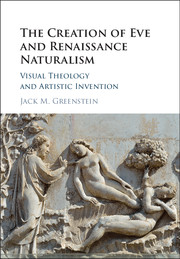Book contents
- The Creation of Eve and Renaissance Naturalism
- The Creation of Eve and Renaissance Naturalism
- Copyright page
- Dedication
- Contents
- Illustrations with photograph credits
- Book part
- Introduction
- Chapter One “In the beginning”
- Chapter Two The rib and the side
- Chapter Three The body of Eve in Andrea Pisano’s Creation relief for the Campanile of Florence Cathedral
- Chapter Four A visual invention: the angels at Eve’s side in Lorenzo Ghiberti’s Genesis panel
- Chapter Five Jacopo della Quercia’s Creation of Eve and the dignity of woman
- Conclusion
- Notes
- Bibliography
- Iconographic Index
- Subject Index
- References
Bibliography
Published online by Cambridge University Press: 05 August 2016
- The Creation of Eve and Renaissance Naturalism
- The Creation of Eve and Renaissance Naturalism
- Copyright page
- Dedication
- Contents
- Illustrations with photograph credits
- Book part
- Introduction
- Chapter One “In the beginning”
- Chapter Two The rib and the side
- Chapter Three The body of Eve in Andrea Pisano’s Creation relief for the Campanile of Florence Cathedral
- Chapter Four A visual invention: the angels at Eve’s side in Lorenzo Ghiberti’s Genesis panel
- Chapter Five Jacopo della Quercia’s Creation of Eve and the dignity of woman
- Conclusion
- Notes
- Bibliography
- Iconographic Index
- Subject Index
- References
- Type
- Chapter
- Information
- The Creation of Eve and Renaissance NaturalismVisual Theology and Artistic Invention, pp. 219 - 240Publisher: Cambridge University PressPrint publication year: 2016



